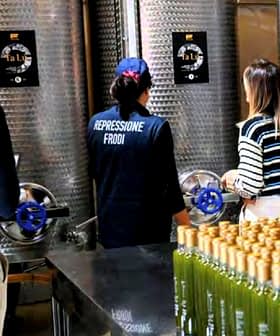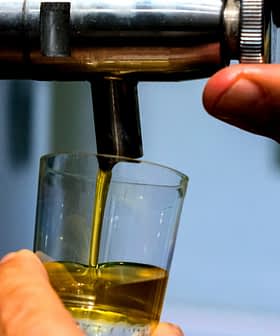 7.7K reads
7.7K readsWorld
Global Production May Exceed Expectations, but Not Enough to Move Prices

Spain and Italy have exceeded initial estimates for olive oil production, resulting in slightly higher yields than expected for the 2023/24 crop year. Despite this increase in production, analysts warn that these better harvests may be the start of a new trend in olive oil prices and economics, with high-quality extra virgin olive oil and other market segments behaving differently in response to the changing climate and market conditions. This shift in the market may lead to a growing dichotomy between commodity olive oil and specialty olive oil, with producers needing to specialize in one segment to thrive in the evolving market landscape.
Olive oil production in Spain and Italy exceeded initial estimates, meaning that the European Union now expects slightly higher yields than originally anticipated in the 2023/24 crop year.
These better-than-expected harvests combined with a wet winter have resulted in a slight reprieve in the olive oil market, reflected by lowering prices at origin from mid-January’s record highs.
Producers will need to specialize in either commodity or specialty production to thrive in this evolving market landscape and avoid being caught in the middle.
However, analysts warn that the 2022/23 and 2023/24 crop years may be the start of a new trend in olive oil prices and economics, in which high-quality extra virgin olive oil and other market segments begin to behave differently.
According to the Spanish Ministry of Agriculture, Fisheries and Food, olive oil production reached 845,000 tons. This revised estimate marks a ten percent increase from the initial forecast of 765,362 tons made at the start of the harvest.
See Also:2023 Harvest UpdatesAs a result of this adjustment, Spain’s olive oil output is now expected to surpass the previous season’s modest achievements by 27 percent. Despite these increases, production volumes are anticipated to be approximately 33 percent below the average of the past ten years.
With the addition of 215,000 tons of imports, these quantities are deemed sufficient for local producers to satisfy domestic olive oil demand, estimated at 400,000 tons, and export requirements, forecasted at 708,172 tons. By the end of the crop year, olive oil stocks are expected to stabilize at 200,000 tons.
Italy, the E.U.’s second-largest olive oil producer, is also expected to outperform its initial projections.
The European Commission’s latest data indicate that Italian olive oil production in the current season will be 330,000 tons.
This estimate is 37 percent higher than the previous season, almost two percent above the average of the last ten years and marginally surpasses the commission’s initial prediction of 324,000 tons. Italy’s ending stocks are projected to remain at 140,000 tons.
Collectively, the E.U.‘s updated figures now show a total production of 1,488,000 tons for the current campaign. This quantity exceeds the 1,392,300 tons of the preceding season, yet it remains notably lower than the decade’s average production of 1,860,000 tons.
Globally, the commission now indicates that olive oil production for the 2023/24 crop year is projected to reach 2,490,000 tons.
Estimates published by the International Olive Council in November forecasted global production to reach 2,407,000 tons in 2023/24.
Despite this increase bolstering olive oil availability after two consecutive challenging seasons, production remains nearly 21 percent below the average of the past decade: 3,065,320 tons.
Slightly higher olive oil availability may not be enough to impact the current trends of a market undergoing significant transformations.
While prices have fallen slightly from record highs, the supply remains significantly below historical demand.
“Even a slight uptick in yield from Spain may not be sufficient to address this imbalance and stabilize prices,” Daniel Santini, a financial analyst and founder of Tuscany-based producer Entimio, told Olive Oil Times.
“The outlook for the upcoming 2024/25 crop year will likely play a crucial role in determining both spot and future prices, as many major buyers are hesitant to commit to large contracts until the harvest outlook becomes clearer,” he added.
Santini said this would be especially evident for lower-quality extra virgin olive oils.
“These have seen substantial price increases, with some labels nearly doubling in price compared to 2023,” he said. Conversely, higher-end products have experienced more modest price hikes, typically between five and 15 percent.”
Santini remarked how affluent consumers “may not feel the impact of inflation as acutely and continue to purchase their preferred olive oil brands.”
At the same time, “budget-conscious buyers are scaling back consumption, seeking promotional deals or switching to alternatives such as avocado or vegetable oils.”
“Even within the higher-end market, there’s a noticeable response to promotional activities and bundled offers, indicating a growing emphasis on obtaining value among consumers,” Santini said.
In addition, the impact of climate change on olive crops looms over the sector and its prospects.
“Many industry experts, myself included, are concerned that the effects of climate change on olive oil production may be evolving into a long-term trend rather than a temporary setback,” Santini said.
“While better years may lie ahead, achieving a return to historical average production levels may require substantial investments in new groves, milling technology and new infrastructure,” he added.
In a scenario where irregular rainfall patterns and rising global temperatures dictate farming choices, Santini noted that “only farmers with irrigated orchards and sufficient water reserves can reliably maintain crop yields and mitigate production fluctuations.”
“However, such practices remain limited, particularly in regions such as Italy, Spain and other traditional olive oil-producing areas,” he said.
Additionally, higher temperatures during harvest, particularly for early-harvest olive oil, pose significant challenges for millers.
“Achieving ‘cold extraction’ of olive oil now necessitates meticulous temperature control throughout the milling process, a capability still lacking among many producers,” Santini said.
“Traditional methods that once sufficed, such as relying on cold nights for milling, are no longer adequate,” he added.
Santini said the olive oil market could experience a schism with two segments that follow distinct market trends if current climatic trends become the next normal instead of anomalies.
“We’re witnessing a growing dichotomy between ‘commodity’ olive oil, which remains susceptible to price fluctuations and substitution by alternative oils or fats, and ‘specialty’ olive oil, which commands higher prices due to its superior quality and appeal to discerning consumers,” Santini said.
In the United States, the highest-quality extra virgin olive oils are sold for $50 to $60 (€45 to €55) per 500 milliliters. Santini predicted prices would continue to rise – potentially reaching $100 (€93) for 500 milliliters – in the next five years.
“Producers will need to specialize in either commodity or specialty production to thrive in this evolving market landscape and avoid being caught in the middle with a product that fails to offer either value or uniqueness,” he concluded.









